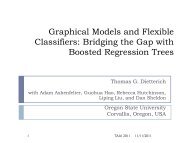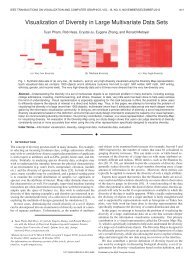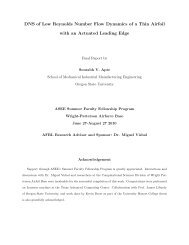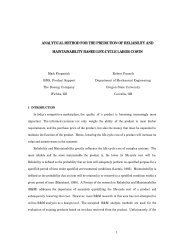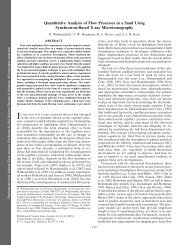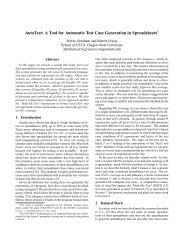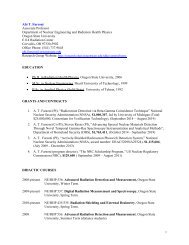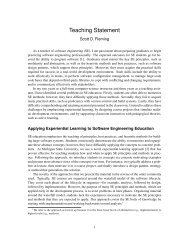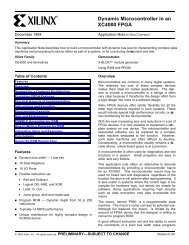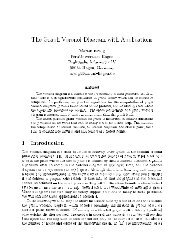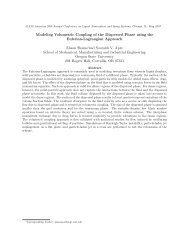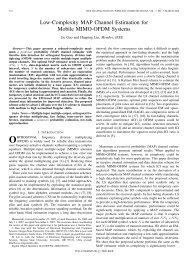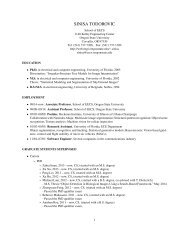Large-eddy Simulation of Realistic Gas Turbine Combustors
Large-eddy Simulation of Realistic Gas Turbine Combustors
Large-eddy Simulation of Realistic Gas Turbine Combustors
Create successful ePaper yourself
Turn your PDF publications into a flip-book with our unique Google optimized e-Paper software.
1 Introduction<br />
The combustion chambers <strong>of</strong> gas-turbine based propulsion systems involve complex phenomena<br />
such as atomization <strong>of</strong> liquid fuel jets, evaporation, collision/coalescence <strong>of</strong> droplets,<br />
and turbulent mixing <strong>of</strong> fuel and oxidizer giving rise to spray-flames. Accurate observations<br />
and quantitative measurements <strong>of</strong> these processes in realistic configurations are difficult and<br />
expensive. Better understanding <strong>of</strong> these flows for design modifications, improvements, and exploring<br />
fundamental physics demands high-fidelity numerical studies in realistic configurations.<br />
Specifically, good predictive capability for swirling, highly turbulent reacting flows in complex<br />
geometries is necessary.<br />
To date the engineering prediction <strong>of</strong> such flows in realistic configurations has relied predominantly<br />
on the Reynolds-averaged Navier-Stokes equations (RANS) [2, 3]. In RANS, turbulence<br />
models for the Reynolds stress tensor provide time (or ensemble) -averaged solutions to the<br />
Navier-Stokes equations. Though computationally efficient, RANS-based models for two-phase<br />
reacting flows do not represent the relevant flow quantities accurately even in simple configurations.<br />
LES and direct numerical simulation (DNS) techniques have been shown to give good<br />
predictions <strong>of</strong> turbulent flows in simple configurations [4]. Recently, Pierce & Moin [5] have<br />
shown the superiority <strong>of</strong> LES to RANS in accurately predicting turbulent mixing and combustion<br />
dynamics in a coaxial combustor geometry. Kim & Syed [6] and Mongia [7] provide a<br />
detailed overview on the importance and role <strong>of</strong> LES in designing advanced gas-turbine combustors.<br />
The flowfield inside the combustor is highly swirling, separated and turbulent with<br />
complex features such as mixing <strong>of</strong> secondary cooling air with hot combustion products. The<br />
spray flame is stabilized by the recirculation bubble created by swirling flow. Multiple, turbulent<br />
jets in cross flow play an important role in scalar mixing; may influence pollutant formation,<br />
and elimination <strong>of</strong> any ‘hot-spots’ in the combustor exit. LES is considered very attractive in<br />
predicting these flow features and their sensitivity to design modifications. However, presently<br />
LES has largely been used to investigate flows in simple configurations. Our goal is to extend<br />
the LES methodology to realistic geometries involving complex physics <strong>of</strong> multiphase, reacting<br />
2



